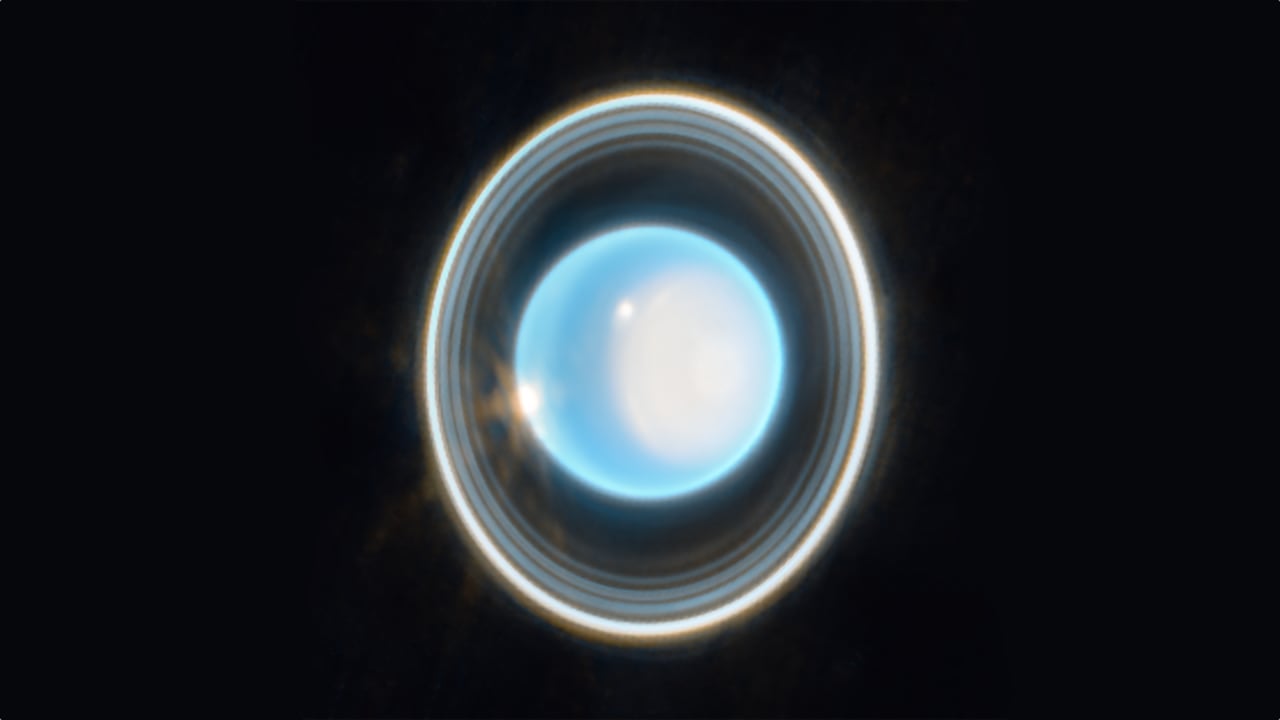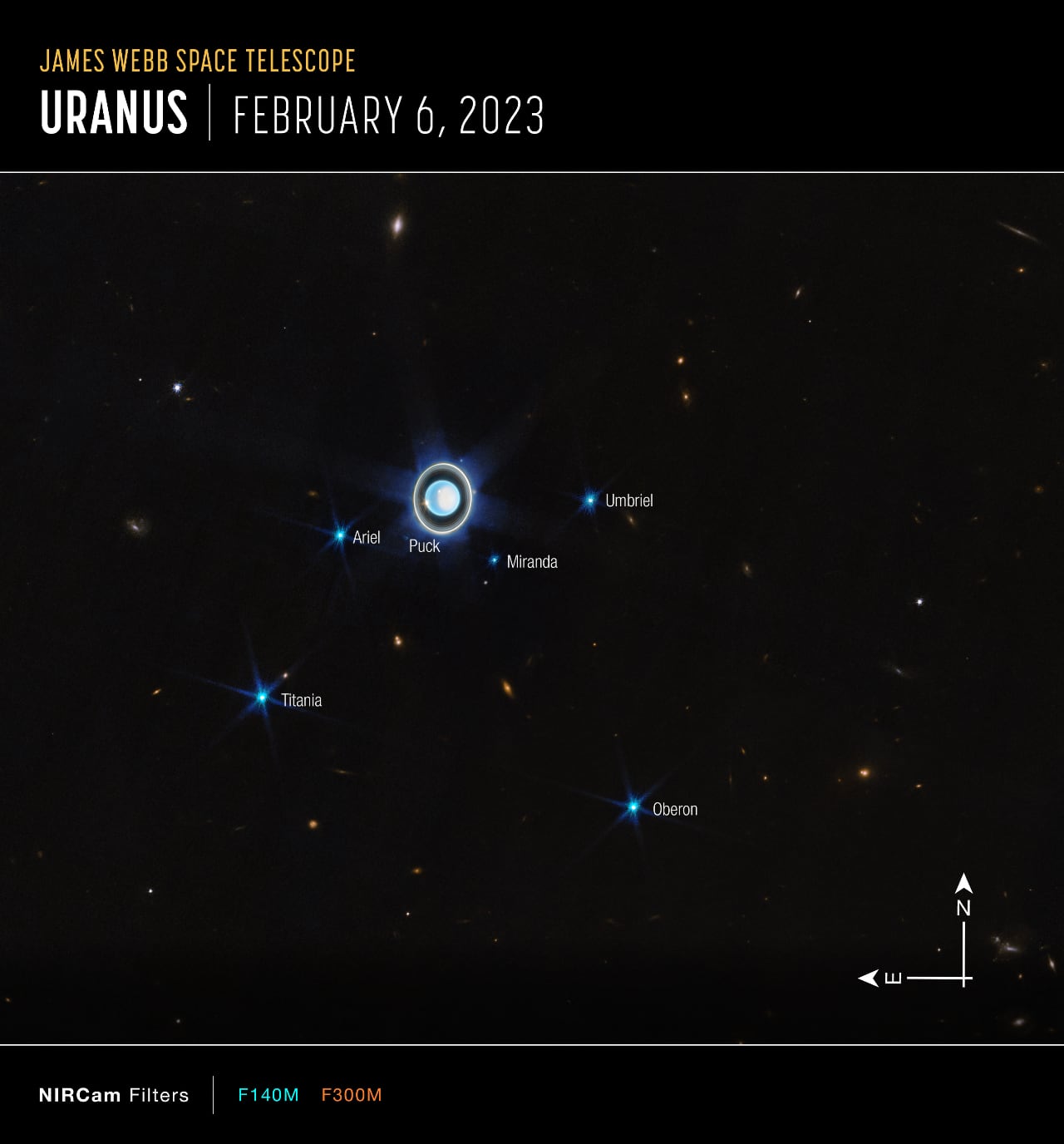
Following in the footsteps of last year’s Neptune image, NASA’s James Webb Space Telescope has taken a stunning image of the solar system’s other ice giant, the planet Uranus.
The new Webb data is a great illustration of the observatory’s unprecedented sensitivity for the faintest dusty rings around the planet Uranus while parked some 1.5m kilometres from Earth. These have previously only been imaged by two other very different facilities: the Voyager 2 spacecraft as it flew past the planet in 1986, and the Keck Observatory in Hawaii with its advanced adaptive optics.
Uranus is unique: It rotates on its side, at roughly a 90-degree angle from the plane of its orbit. This infrared image has been generated from Webb’s Near-Infrared Camera (NIRCam) and combines data from two filters at 1.4 and 3.0 microns, which are shown here in blue and orange, respectively. The planet displays a blue hue in the resulting representative-colour image.
Back in 1986 when Voyager 2 looked at Uranus, its camera showed an almost featureless blue-green ball in visible wavelengths. With the infrared wavelengths and extra sensitivity of Webb, however, we see more detail, showing how dynamic the atmosphere of the planet really is.
Uranus has 13 known rings and 11 of them are visible in this image. Webb also captured many of Uranus’ 27 known moons (most of which are too small and faint to be seen); the six brightest are identified in the wide-view image below.

This was only a short, 12-minute exposure image of Uranus with just two filters, and rather enticingly NASA says that this is just the tip of the iceberg of what Webb can do when observing this mysterious planet.
Additional studies of Uranus are happening now, and even more are planned in Webb’s first year of science operations. Literally, watch this space.
Tags: Technology Space


Comments